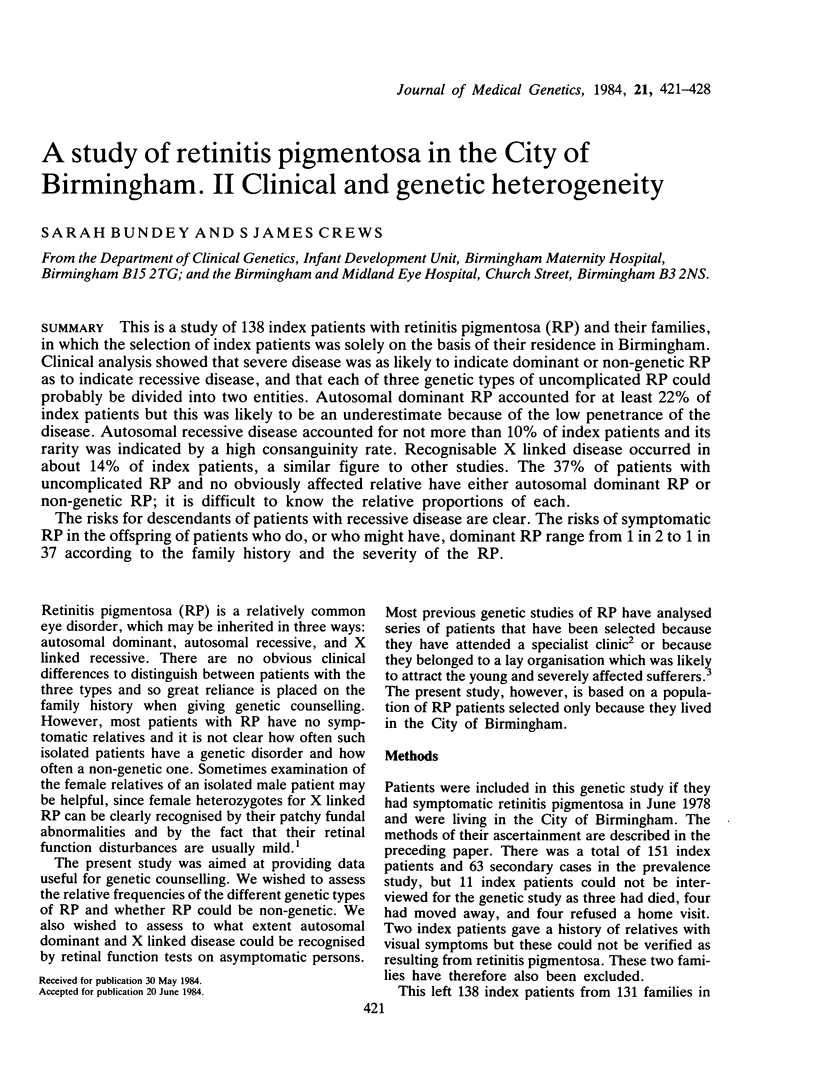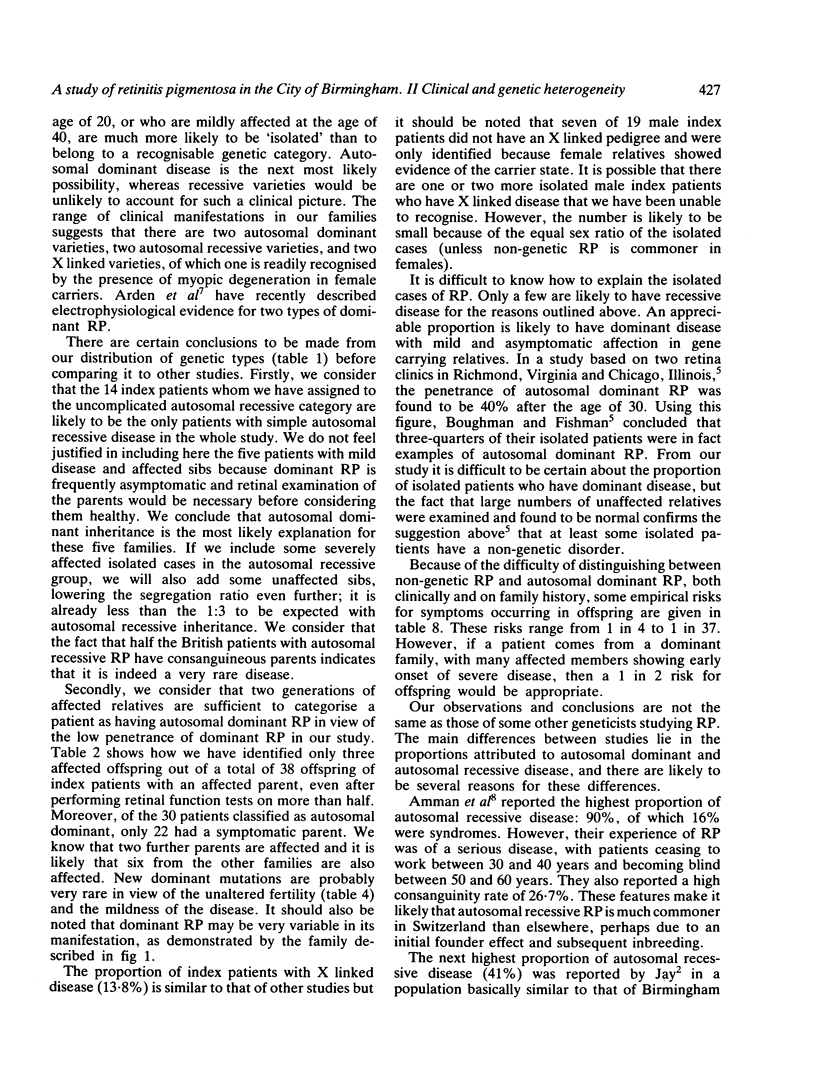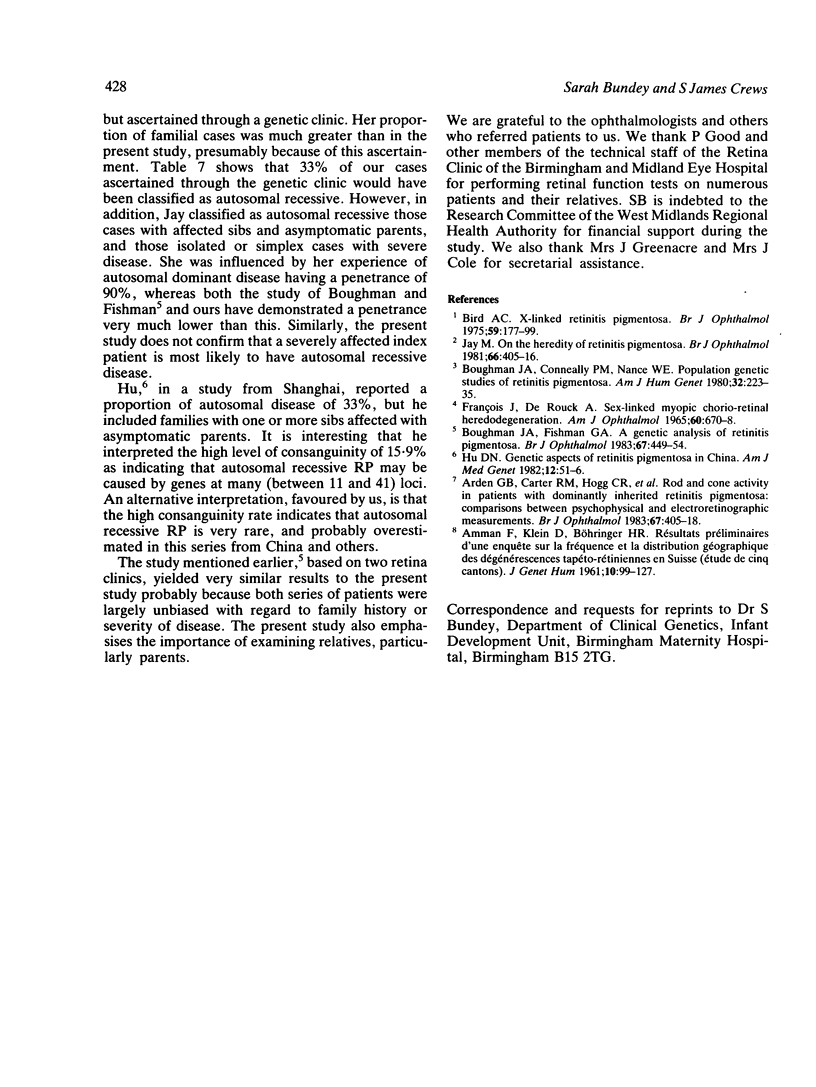Abstract
This is a study of 138 index patients with retinitis pigmentosa (RP) and their families, in which the selection of index patients was solely on the basis of their residence in Birmingham. Clinical analysis showed that severe disease was as likely to indicate dominant or non-genetic RP as to indicate recessive disease, and that each of three genetic types of uncomplicated RP could probably be divided into two entities. Autosomal dominant RP accounted for at least 22% of index patients but this was likely to be an underestimate because of the low penetrance of the disease. Autosomal recessive disease accounted for not more than 10% of index patients and its rarity was indicated by a high consanguinity rate. Recognisable X linked disease occurred in about 14% of index patients, a similar figure to other studies. The 37% of patients with uncomplicated RP and no obviously affected relative have either autosomal dominant RP or non-genetic RP; it is difficult to know the relative proportions of each. The risks for descendants of patients with recessive disease are clear. The risks of symptomatic RP in the offspring of patients who do, or who might have, dominant RP range from 1 in 2 to 1 in 37 according to the family history and the severity of the RP.
Full text
PDF







Selected References
These references are in PubMed. This may not be the complete list of references from this article.
- AMMANN F., KLEIN D., BOHRINGER H. R. [Preliminary results of a survey on the incidence and geographic distribution of tapeto-retinal degeneration in Switzerland (study of 5 cantons)]. J Genet Hum. 1961 Jul;10:99–127. [PubMed] [Google Scholar]
- Arden G. B., Carter R. M., Hogg C. R., Powell D. J., Ernst W. J., Clover G. M., Lyness A. L., Quinlan M. P. Rod and cone activity in patients with dominantly inherited retinitis pigmentosa: comparisons between psychophysical and electroretinographic measurements. Br J Ophthalmol. 1983 Jul;67(7):405–418. doi: 10.1136/bjo.67.7.405. [DOI] [PMC free article] [PubMed] [Google Scholar]
- Bird A. C. X-linked retinitis pigmentosa. Br J Ophthalmol. 1975 Apr;59(4):177–199. doi: 10.1136/bjo.59.4.177. [DOI] [PMC free article] [PubMed] [Google Scholar]
- Boughman J. A., Conneally P. M., Nance W. E. Population genetic studies of retinitis pigmentosa. Am J Hum Genet. 1980 Mar;32(2):223–235. [PMC free article] [PubMed] [Google Scholar]
- Boughman J. A., Fishman G. A. A genetic analysis of retinitis pigmentosa. Br J Ophthalmol. 1983 Jul;67(7):449–454. doi: 10.1136/bjo.67.7.449. [DOI] [PMC free article] [PubMed] [Google Scholar]
- François J., De Rouck A. Sex-linked myopic chorioretinal heredodegeneration. Am J Ophthalmol. 1965 Oct;60(4):670–678. doi: 10.1016/0002-9394(65)92258-0. [DOI] [PubMed] [Google Scholar]
- Hu D. N. Genetic aspects of retinitis pigmentosa in China. Am J Med Genet. 1982 May;12(1):51–56. doi: 10.1002/ajmg.1320120107. [DOI] [PubMed] [Google Scholar]
- Jay M. On the heredity of retinitis pigmentosa. Br J Ophthalmol. 1982 Jul;66(7):405–416. doi: 10.1136/bjo.66.7.405. [DOI] [PMC free article] [PubMed] [Google Scholar]


